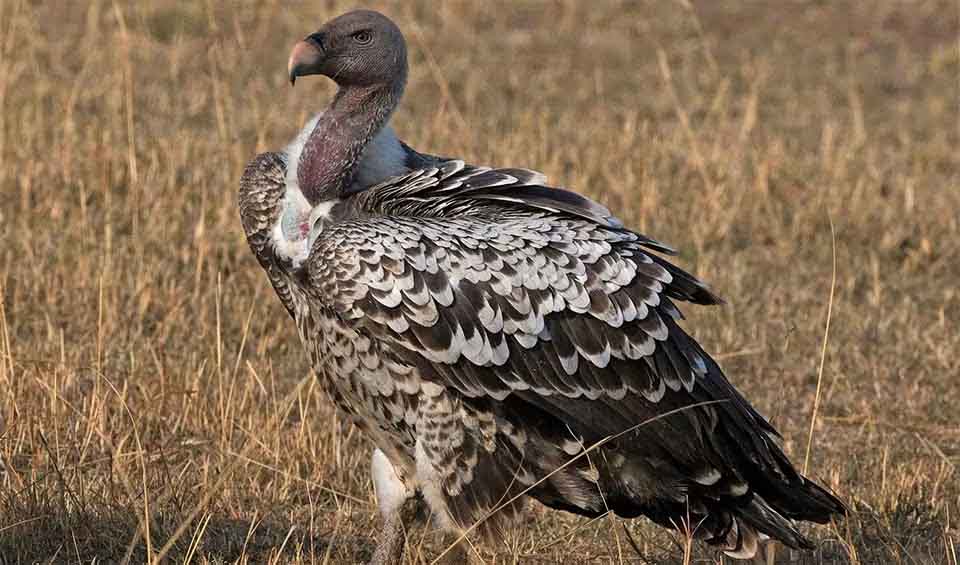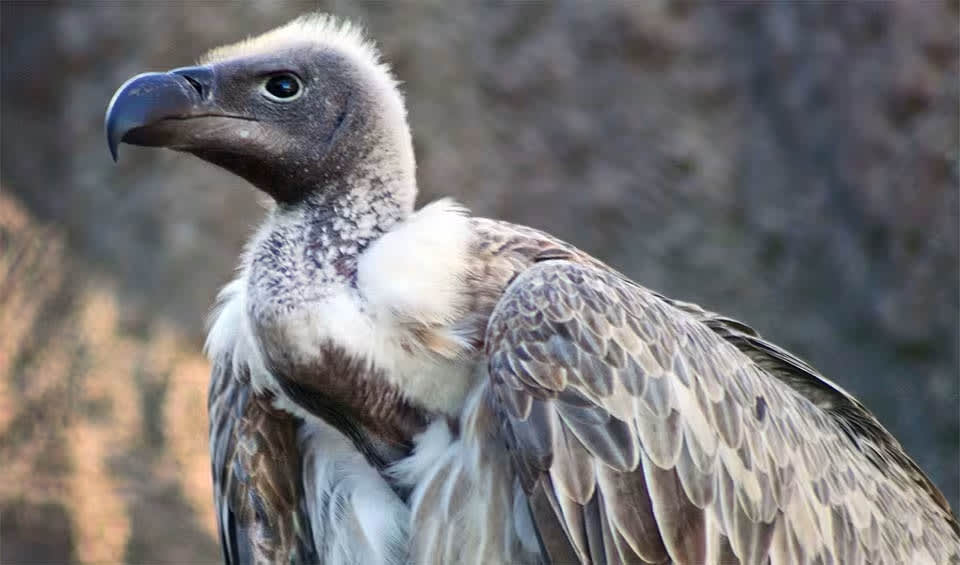Gyps – Griffon vultures
The janitors of the savannahs, feed on carcasses and corpses
Griffon Vultures are a notable part of the ‘Old World vultures’ group and can be found throughout Europe, Asia, and Africa. These birds are an essential component of the ecosystem, serving as nature’s clean-up crew. They are large birds with wingspans that can reach over 2.5 meters (8 feet), enabling them to soar high and ride thermals for hours with minimal effort.
The appearance of Griffon Vultures is characterized by their bald or sparsely feathered heads, which is an adaptation for hygiene, allowing them to stay clean when feeding on carcasses. Their necks are long and slender, often with a ruff of feathers at the base. The plumage can vary between species, ranging from creamy and white in younger individuals to darker shades in older birds.
Their beaks are robust and hooked, designed for tearing flesh, and their large, dark nostrils are distinctive. Unlike the nostrils of many other bird species, those of the Griffon Vulture do not have a septum, which assists in their breathing when their head is inside a carcass.
Griffon Vultures are social creatures, especially when feeding. They can often be seen in carcasses in large numbers, and they have a hierarchy based on size and strength, determining the order in which they feed. Despite their competitive nature at feeding sites, they can be quite tolerant of each other, provided there is sufficient food to go around.
Reproduction in Griffon Vultures is a slow process. They generally produce only one egg per year, and both parents are involved in the incubation and rearing of the chick. The low reproductive rate means that population recovery can take a long time if numbers decline.
Species in this genus
Indian vulture
A majestic scavenger with a wingspan wider than a car
Rüppells vulture
Once found flying 11,300 meters (37,100 ft) high, sadly, this was more of an accident than a discovery
White-backed vulture
Their highly acidic stomachs and powerful enzymes help break down and neutralize harmful bacteria and toxins present in the carcasses they feed on
Cape vulture
These birds are built for flight; their massive wings allow them to glide effortlessly on thermal currents for hours
Himalayan vulture
Unlike most vultures with bald heads, it has a unique feature – a ruff of white feathers around its neck
Eurasian Griffon
Most social vultures with 12 distinct types of vocalization







